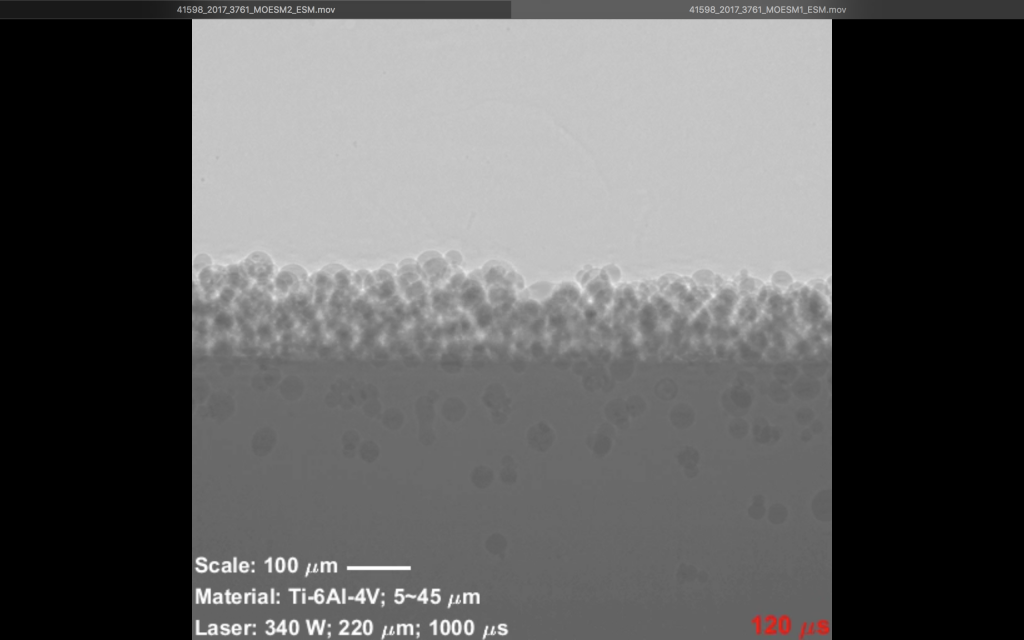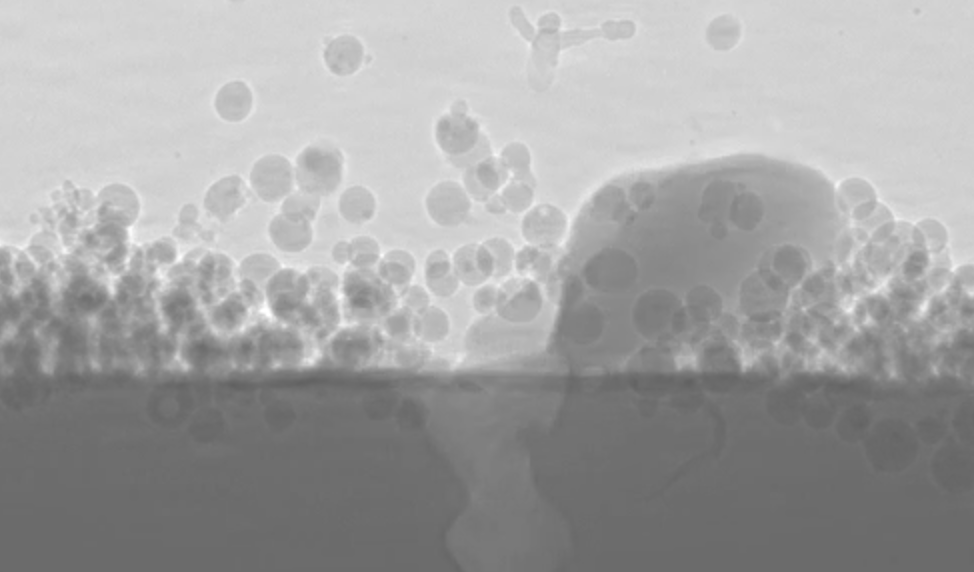In the latest release from the U.S. Department of Energy (DoE), Argonne National Laboratory (ANL) reveals developments in its high-speed imaging of laser melting inside metal 3D printers.
Conducted in collaboration with Carnegie Mellon University, and Missouri University of Science and Technology, the study contributes to a body of research seeking to improve the additive manufacturing process, and increase adoption in industries around the world.
50,000 frames per second
High-speed x-rays at ANL are focused on the melt pool of metal that forms behind a laser in SLM 3D printing methods. By capturing the process at 50,000 frames per second, physicists are able to study metal particle behaviour as it transitions from powder to liquid to solid.
Argonne Physicist Tao Sun explains, “We can study the resulting movie frame by frame to examine how the material’s microstructure, especially defects and pores, form.”

The “spatter effect”
In related research from Lawrence Livermore National Laboratory, (LLNL) high-speed imaging techniques have debunked some preconceptions about the melting process, revealing that induced airflow is the primary cause of the “spatter effect,” responsible for surface roughness in 3D printed metal parts.
As previously discussed with LLNL researchers Ibo Matthews and Wayne King, this principle is caused by the Bernoulli effect, a key principle in fluid dynamics that explains how airplanes stay in the air. In build chamber metrology, this effectively means that “cold” particle are sucked into a hot pool, remaining semi-sintered and causing imperfections in the end part.

New possibilities in metal AM
The goal of ANL’s collaborative research according to Aaron Greco, principal Materials Scientist at Argonne and Project Co-leader of its additive manufacturing effort, is “to explore new possibilities.”
He adds, “Industries are currently limited to a certain set of metal alloys. But what about new ones? If you understand the physical properties related to how to print new alloys, you can adopt these into the process and speed up the reliability of printing.”
Greco explains that the team use a variety of imaging techniques to read the melt pool, “including optical and electron microscopy and even tomography at the Advanced Photon Source.” All of this information is then fed through ANL’s IBM Mira, the fifth-fastest supercomputer in the world, creating a continuous system of fabrication and verification.

A paper supporting ANL’s discoveries has been published in the journal Scientific Reports, complete with supplementary videos of the melt pool taken at 50,000 fps.
To stay up to date with the latest metal additive manufacturing research projects, sign up to the free 3D Printing Industry newsletter, and find us on Facebook/Twitter.
Find the latest 3D printing events near you here.
Featured image: High speed x-rays of the metal additive manufacturing process captured at Argonne National Laboratory. Image via ANL


